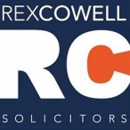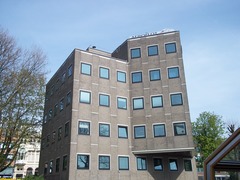Misrepresentation and insurance
When taking out an insurance policy, it might seem tempting to minimise the risk insured against with a view to reducing the premium. However, a recent High Court case concerning a catastrophic property fire showed why absolute frankness is required.
The case of Dalecroft Properties Limited v Underwriters [2017], concerned a five-storey mixed commercial and residential property that was so severely damaged by a fire that it had to be demolished.
Its owners claimed a seven-figure sum from their insurers, but the latter refused to pay on the basis that various features of the property had been misrepresented to them.
When applying for the insurance, the owners had described the property as in good repair. However, the Court noted evidence that, among other things, many of its windows were broken or falling out and that its roof leaked.
The owners’ assertions that the property did not have a flat roof and had not been subject to malicious acts of vandalism were also substantially incorrect.
In refusing to order the insurers to indemnify the owners for their loss, the Court noted that the latter had made no real effort to fairly represent the risk. Had they done so, the insurers would probably have declined cover.
In the circumstances, the insurers were entitled to avoid the policy and tender the return of the premium.
[edit] Related articles on Designing Buildings Wiki
- Caveat emptor in property sales.
- Directors and officers insurance.
- Employer's liability insurance.
- Excepted risk.
- Failure to mention asbestos.
- Failure to notify tenant.
- Insurance.
- Legal indemnity insurance.
- Material non-disclosure.
- Non-negligent liability insurance.
- Property disrepair and landlord liabilities.
- Specified perils.
Featured articles and news
Latest Build UK Building Safety Regime explainer published
Key elements in one short, now updated document.
UKGBC launch the UK Climate Resilience Roadmap
First guidance of its kind on direct climate impacts for the built environment and how it can adapt.
CLC Health, Safety and Wellbeing Strategy 2025
Launched by the Minister for Industry to look at fatalities on site, improving mental health and other issues.
One of the most impressive Victorian architects. Book review.
Common Assessment Standard now with building safety
New CAS update now includes mandatory building safety questions.
RTPI leader to become new CIOB Chief Executive Officer
Dr Victoria Hills MRTPI, FICE to take over after Caroline Gumble’s departure.
Social and affordable housing, a long term plan for delivery
The “Delivering a Decade of Renewal for Social and Affordable Housing” strategy sets out future path.
A change to adoptive architecture
Effects of global weather warming on architectural detailing, material choice and human interaction.
The proposed publicly owned and backed subsidiary of Homes England, to facilitate new homes.
How big is the problem and what can we do to mitigate the effects?
Overheating guidance and tools for building designers
A number of cool guides to help with the heat.
The UK's Modern Industrial Strategy: A 10 year plan
Previous consultation criticism, current key elements and general support with some persisting reservations.
Building Safety Regulator reforms
New roles, new staff and a new fast track service pave the way for a single construction regulator.
Architectural Technologist CPDs and Communications
CIAT CPD… and how you can do it!
Cooling centres and cool spaces
Managing extreme heat in cities by directing the public to places for heat stress relief and water sources.
Winter gardens: A brief history and warm variations
Extending the season with glass in different forms and terms.
Restoring Great Yarmouth's Winter Gardens
Transforming one of the least sustainable constructions imaginable.
























